Iberico Pigs and Their Surroundings
Iberico Ham
The Cerdo Iberico Pig
Ham must be made with at least 75% pure cerdo Iberico breed pig to qualify as jamon Iberico.
This ancient breed, native to Spain and Portugal, is distinguished by its long, slender legs and snout and by its trademark black hooves.
Cerdo Iberico pigs can be black, red, spotted or on rare occasions, light skinned. They tend to grow much faster and larger than the more familiar white/pink "Duroc" breed well known in Europe and North America. (Though these are used in Spain for its traditional Serrano ham.)
While some ham producers use nothing less than pure 100% Iberico breed pigs, others use a genetic blend with the Duroc, which produces more offspring and, according to some, more intense marbling of the pork. The Spanish Ministry of Agriculture has also set guidelines under which hams can be classified as Iberico.
Iberico puro: from pure Iberico mother and father, registered in the studbook.
Iberico: mother from Iberico pig stock.
Take a look at a selection of Iberico ham products
The Dehesa of Spain
Magnificent prehistoric forests once covered much of Spain, but humanity's footprint has reduced these to a small number of protected meadows.
In order to create a self-sustaining environment for over 55 animal species, the Spanish government systematically thinned the oak and cork trees in the Extremadura region for agriculture and ecological preservation.
Pigs destined for bellota-grade meat are lucky enough to spend their final months (the fattening period known as the montanera) in the dehesa freely foraging for acorns and grasses. In return, they help manage and sustain the environment by reducing undergrowth and fertilizing the soil.



